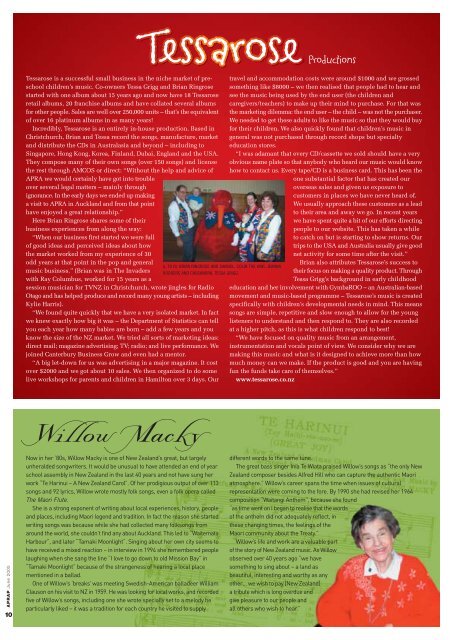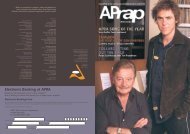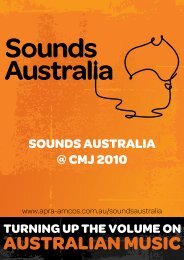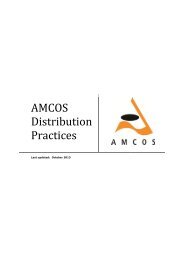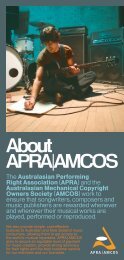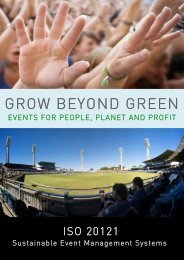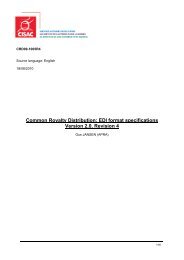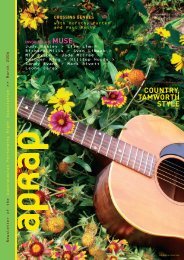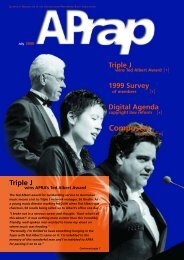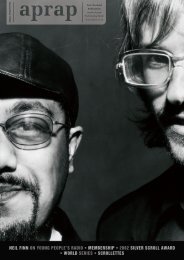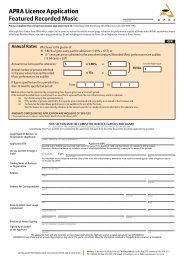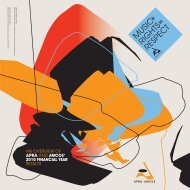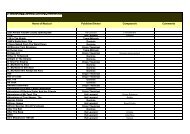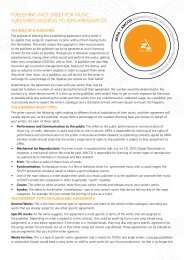Create successful ePaper yourself
Turn your PDF publications into a flip-book with our unique Google optimized e-Paper software.
Tessarose is a successful small business in the niche market of preschool<br />
children’s music. Co-owners Tessa Grigg and Brian Ringrose<br />
started with one album about 15 years ago and now have 18 Tessarose<br />
retail albums, 20 franchise albums and have collated several albums<br />
for other people. Sales are well over 250,000 units – that’s the equivalent<br />
of over 16 platinum albums in as many years!<br />
Incredibly, Tessarose is an entirely in-house production. Based in<br />
Christchurch, Brian and Tessa record the songs, manufacture, market<br />
and distribute the CDs in Australasia and beyond – including to<br />
Singapore, Hong Kong, Korea, Finland, Dubai, England and the USA.<br />
They compose many of their own songs (over 150 songs) and license<br />
the rest through AMCOS or direct: “Without the help and advice of<br />
APRA we would certainly have got into trouble<br />
over several legal matters – mainly through<br />
ignorance. In the early days we ended up making<br />
a visit to APRA in Auckland and from that point<br />
have enjoyed a great relationship.”<br />
Here Brian Ringrose shares some of their<br />
business experiences from along the way:<br />
“When our business first started we were full<br />
of good ideas and perceived ideas about how<br />
the market worked from my experience of 30<br />
travel and accommodation costs were around $1000 and we grossed<br />
something like $8000 – we then realised that people had to hear and<br />
see the music being used by the end user (the children and<br />
caregivers/teachers) to make up their mind to purchase. For that was<br />
the marketing dilemma: the end user – the child – was not the purchaser.<br />
We needed to get these adults to like the music so that they would buy<br />
for their children. We also quickly found that children’s music in<br />
general was not purchased through record shops but specialty<br />
education stores.<br />
“I was adamant that every CD/cassette we sold should have a very<br />
obvious name plate so that anybody who heard our music would know<br />
how to contact us. Every tape/CD is a business card. This has been the<br />
one substantial factor that has created our<br />
overseas sales and given us exposure to<br />
customers in places we have never heard of.<br />
We usually approach these customers as a lead<br />
to their area and away we go. In recent years<br />
we have spent quite a bit of our efforts directing<br />
people to our website. This has taken a while<br />
to catch on but is starting to show returns. Our<br />
trips to the USA and Australia usually give good<br />
net activity for some time after the visit.”<br />
odd years at that point in the pop and general<br />
Brian also attributes Tessarose’s success to<br />
(L TO R): BRIAN RINGROSE AND SAMUEL, COLIN THE KIWI, JEANNA<br />
music business.” (Brian was in The Invaders RODGERS AND CASSANDRA, TESSA GRIGG.<br />
their focus on making a quality product. Through<br />
with Ray Columbus, worked for 15 years as a<br />
Tessa Grigg’s background in early childhood<br />
session musician for TVNZ in Christchurch, wrote jingles for Radio education and her involvement with GymbaROO – an Australian-based<br />
Otago and has helped produce and record many young artists – including movement and music-based programme – Tessarose’s music is created<br />
Kylie Harris).<br />
specifically with children’s developmental needs in mind. This means<br />
“We found quite quickly that we have a very isolated market. In fact songs are simple, repetitive and slow enough to allow for the young<br />
we knew exactly how big it was – the Department of Statistics can tell listeners to understand and then respond to. They are also recorded<br />
you each year how many babies are born – add a few years and you at a higher pitch, as this is what children respond to best!<br />
know the size of the NZ market. We tried all sorts of marketing ideas: “We have focused on quality music from an arrangement,<br />
direct mail; magazine advertising; TV; radio; and live performance. We instrumentation and vocals point of view. We consider why we are<br />
joined Canterbury Business Grow and even had a mentor.<br />
making this music and what is it designed to achieve more than how<br />
“A big let-down for us was advertising in a major magazine. It cost much money can we make. If the product is good and you are having<br />
over $2000 and we got about 10 sales. We then organized to do some fun the funds take care of themselves.”<br />
live workshops for parents and children in Hamilton over 3 days. Our www.tessarose.co.nz<br />
Willow Macky<br />
<strong>APRAP</strong> <strong>June</strong> 2005<br />
10<br />
Now in her ’80s, Willow Macky is one of New Zealand’s great, but largely<br />
unheralded songwriters. It would be unusual to have attended an end of year<br />
school assembly in New Zealand in the last 40 years and not have sung her<br />
work “Te Harinui – A New Zealand Carol”. Of her prodigious output of over 113<br />
songs and 92 lyrics, Willow wrote mostly folk songs, even a folk opera called<br />
The Maori Flute.<br />
She is a strong exponent of writing about local experiences, history, people<br />
and places, including Maori legend and tradition. In fact the reason she started<br />
writing songs was because while she had collected many folksongs from<br />
around the world, she couldn’t find any about Auckland. This led to “Waitemata<br />
Harbour”, and later “Tamaki Moonlight”. Singing about her own city seems to<br />
have received a mixed reaction – in interview in 1994 she remembered people<br />
laughing when she sang the line “I love to go down to old Mission Bay” in<br />
“Tamaki Moonlight” because of the strangeness of hearing a local place<br />
mentioned in a ballad.<br />
One of Willow’s ‘breaks’ was meeting Swedish-American balladeer William<br />
Clauson on his visit to NZ in 1959. He was looking for local works, and recorded<br />
five of Willow’s songs, including one she wrote specially set to a melody he<br />
particularly liked – it was a tradition for each country he visited to supply<br />
different words to the same tune.<br />
The great bass singer Inia Te Wiata praised Willow’s songs as “the only New<br />
Zealand composer besides Alfred Hill who can capture the authentic Maori<br />
atmosphere.” Willow’s career spans the time when issues of cultural<br />
representation were coming to the fore. By 1990 she had revised her 1964<br />
composition “Waitangi Anthem”, because she found<br />
“as time went on I began to realise that the words<br />
of the anthem did not adequately reflect, in<br />
these changing times, the feelings of the<br />
Maori community about the Treaty.”<br />
Willow’s life and work are a valuable part<br />
of the story of New Zealand music. As Willow<br />
observed over 40 years ago “we have<br />
something to sing about – a land as<br />
beautiful, interesting and worthy as any<br />
other… we wish to pay [New Zealand]<br />
a tribute which is long overdue and<br />
give pleasure to our people and<br />
all others who wish to hear.”


